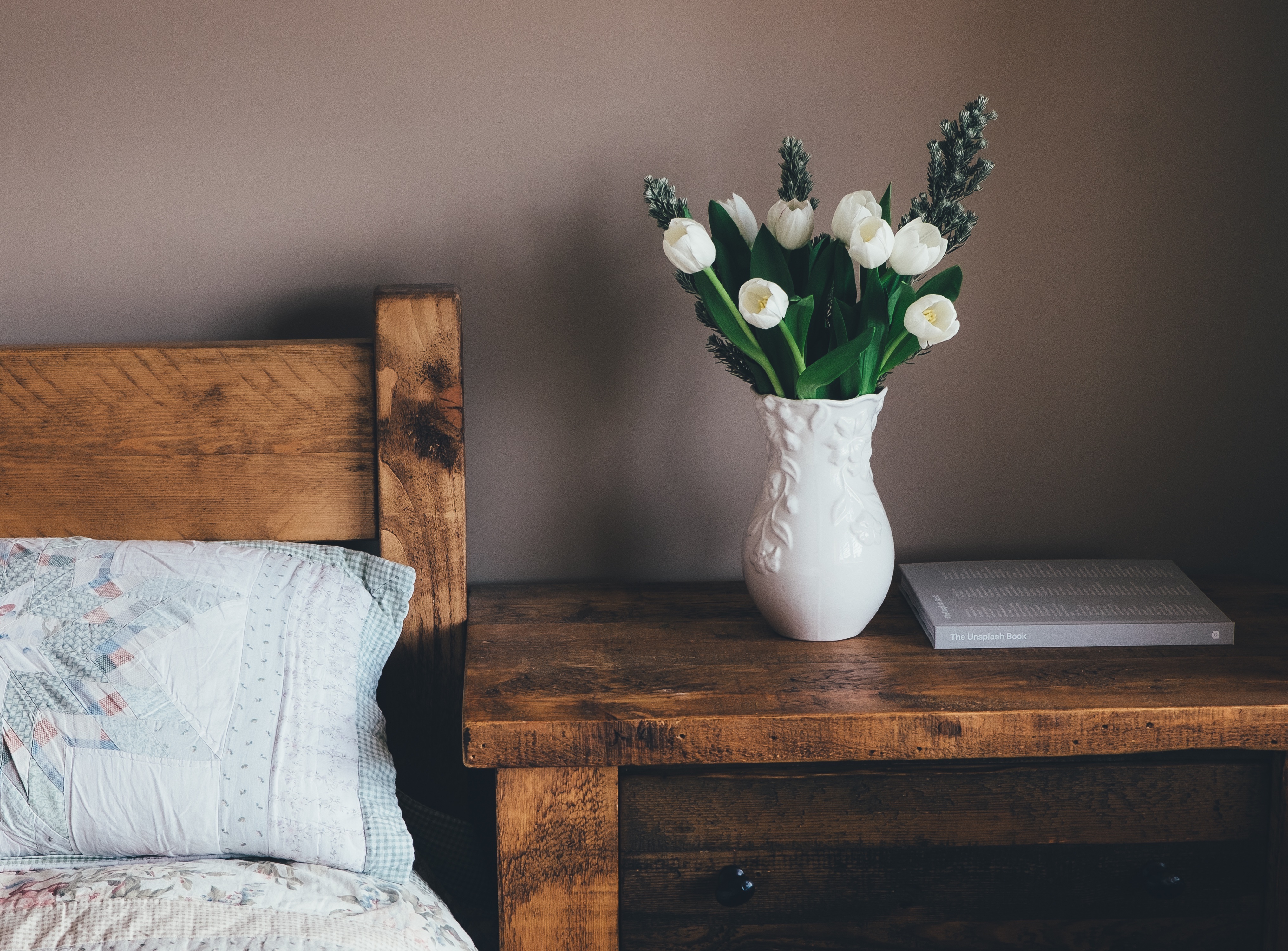
If you’re a fan of interior design, you may have noticed a lot of green gracing the pages of your favorite magazines—it’s the on-trend color for interiors right now.
It’s a nice synchronicity for the urgent need we have to “green” as many aspects of our day-to-day life as we can, in our race to slow down the earth’s rising temperature.
If you’re feeling inspired to introduce the color green into the furniture, walls, or fabrics in your home, how about also making an effort to adopt as eco-friendly an approach to your décor as you possibly can?
Following are some tips to help you green your décor:
Paints:
Solvent-based paints are energy-intensive to produce and can also produce between 10 and 30 tonnes of toxic waste per tonne of paint.
Instead, look for plant and mineral based paints, which usually also have the benefit of being low-VOC. VOCs are volatile organic compounds and have a carcinogenic effect on us. (An interesting and scary fact: Professional painters and decorators have a significantly elevated risk of bladder cancer compared to the general population.)
The other scary VOC fact, which most of us don’t consider once the paint is dry and the fumes have subsided, is that they can be emitted into the air for up to five years—so it’s not only the painter’s health that’s at risk.
Natural paints are initially more expensive, but this is one of those cases where it’s genuinely worth it. Not only is it better for the planet’s health, but it’s also better for the health of those who will live and work in the rooms whose walls have been treated with natural paints.
A Green Furniture Guide:
Choose quality furniture that is sustainably produced. It doesn’t have to be new—clever and patient searching can unearth hidden gems at flea markets, second hand stores, and online. Even if you have to fork out more money for it, choose investment pieces that you will love for years to come.
Cheaply produced furniture will wear out quickly, needing replacement sooner, and is likely to fall out of favor with us much more quickly too. Of course it is more readily replaceable with the latest trendy and affordable items, but that just adds more to the landfill. (Cheaper furniture often also uses toxic materials in its production and can trigger allergic reactions.)
Upcycle what you already have. When we’re redecorating, we’re often looking to change the look and feel of a room. And sometimes the furniture we already have doesn’t fit that new look.
But before deciding to replace it, take a good look at how what you already have might be updated or re-purposed. (Pinterest is awash with inspiration.) Consider moving pieces from one room to another—the same piece of furniture, given a new function (and perhaps a facelift with paint or wallpaper) can look surprisingly “right” in its new location.
Donate what you really don’t want to keep. If we can’t love it anymore, that doesn’t mean somebody else won’t. Ask family and friends if anyone needs what you’re passing on. And if no one in your circle wants it, then donate it to charity or offer it on freecycle.org.
Choose less furniture. Less is more—so why not explore the minimalist movement? We don’t have to be as extreme as those featured in the film, but we can take a look around and reflect on how much of the “stuff” in our homes adds to our lives. Indeed, how much of it detracts valuable time needing to be dusted, polished, and tidied away?
Instead of mindlessly accumulating stuff, let’s adopt an approach of carefully editing and curating our possessions so that our homes are only filled with items that reflect what is of true interest and importance to us.
The more things we have in our homes, the more lost our treasured possessions become in the sea of all our stuff. The fewer we have, the less furniture we need to store them in.
By being more selective, we give our gems the space to shine and the opportunity to grab our attention more frequently (and give our hearts a boost of joy each time). And that will also help us to tap into a feeling of gratitude for what we do have and love.
Soft Furnishings:
Curtains, cushions, bed linen, rugs, and throws can be expensive, especially if we’re looking to create an instant effect in a newly decorated room rather than slowly curate over time. I’m as much a bargain-hunter as the next person, but we do need to be mindful when shopping on a budget for these items.
As with furniture, consider second-hand. Fabric can be washed—and it can be re-purposed if you’re handy with a sewing machine.
And when buying new, look for sustainably-produced, fair trade products. GOTS (Global Organic Textile Standard) is a great label to look out for on all textiles. It is the highest standard for organic fibre production in the world, and requires a minimal use of chemicals along the entire production chain, as well as demanding good social conditions for the workers involved in its production.
BetterCotton.org is another good reference source. An initiative of WWF, it was established as an independent organisation in 2009 to encourage producers and suppliers to sign up to a global standard of cotton production that supports better production practices and better livelihoods and working conditions for farmers. A list of current members is supplied on their website.
A general rule of thumb, when redecorating, is to think long-term.
Think of the long-term implications for the environment and those working in the industries.
Think of the long-term implications for our own health.
And think about the longevity of our new décor scheme!
Avoid being too influenced by current trends (especially with kitchens and bathrooms) and aim for a look that won’t date too quickly. That way, we feel better about investing in quality, sustainably-produced products. It also helps to foster the patience to seek out the perfect pre-loved piece rather than rushing out to buy cheap furniture.
A decorating spree is usually driven by a vision for what we want to create in a space. Let’s incorporate a bigger, greener picture into that vision.
~
Author: Hilda Carroll
Image: Annie Spratt/Unsplash
Editor: Catherine Monkman
 Share on bsky
Share on bsky





Read 0 comments and reply